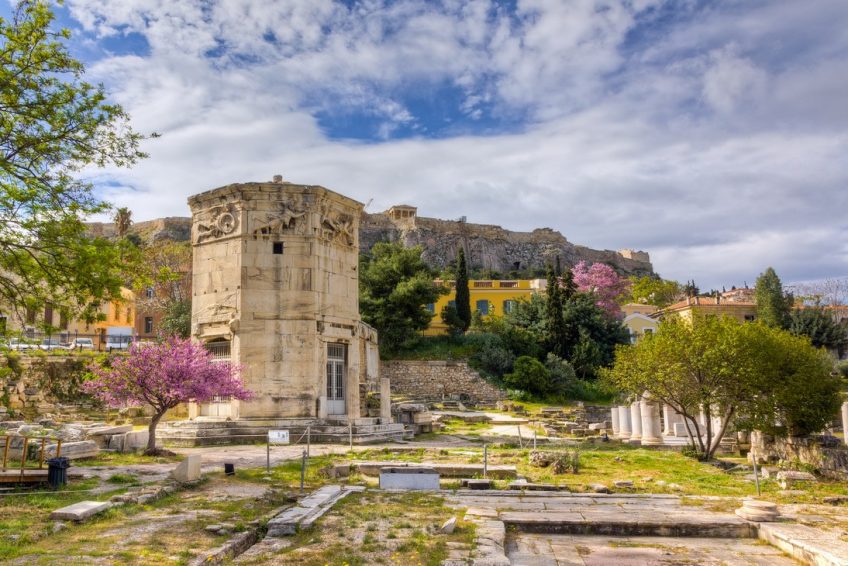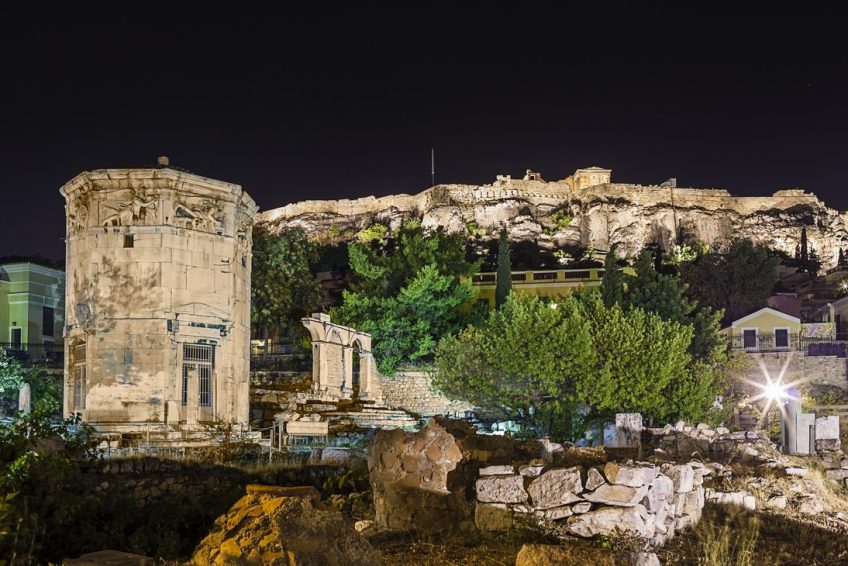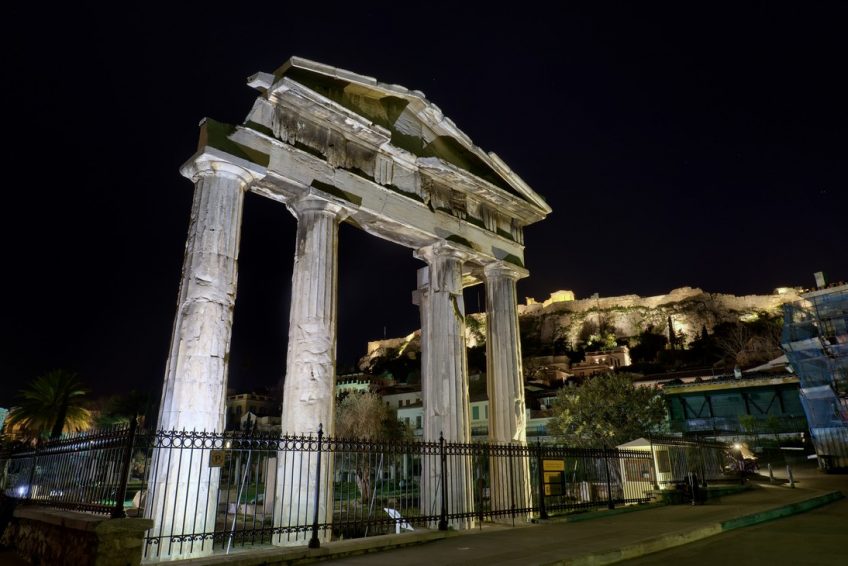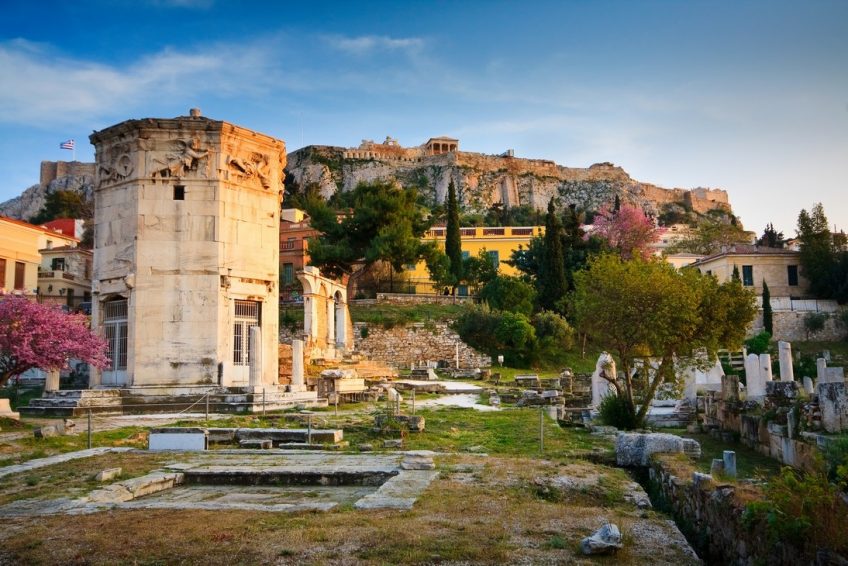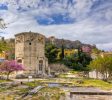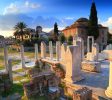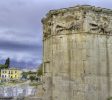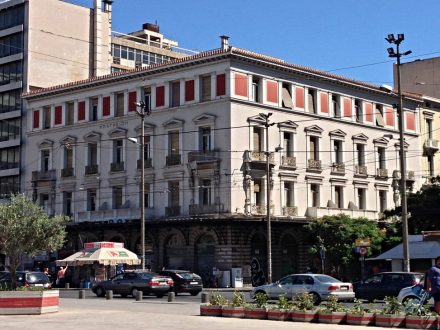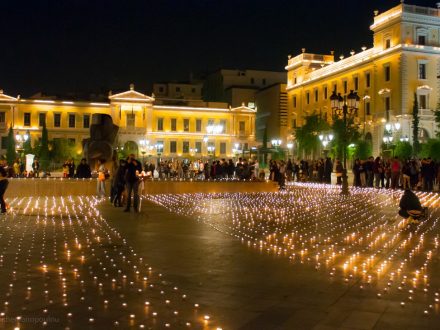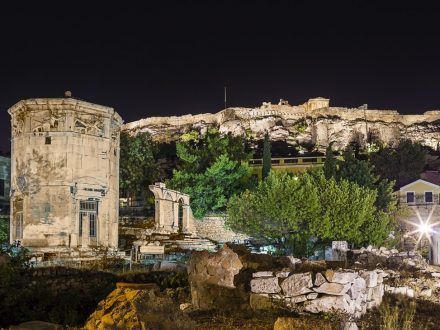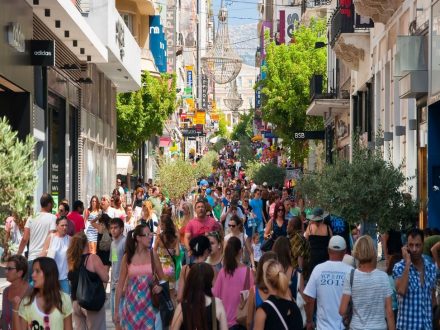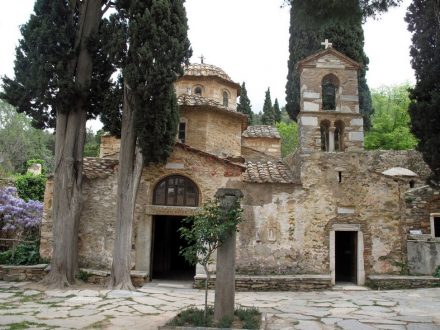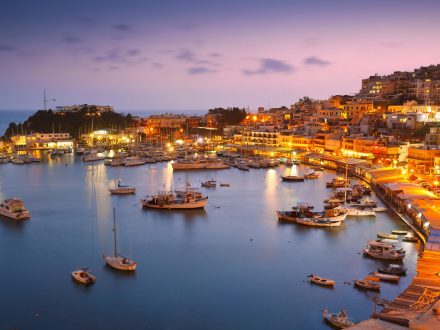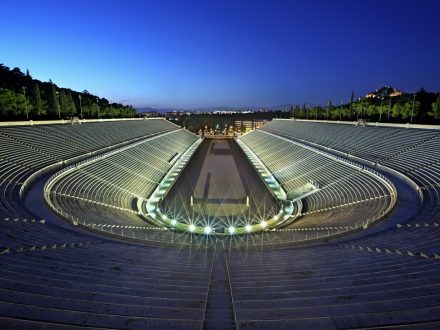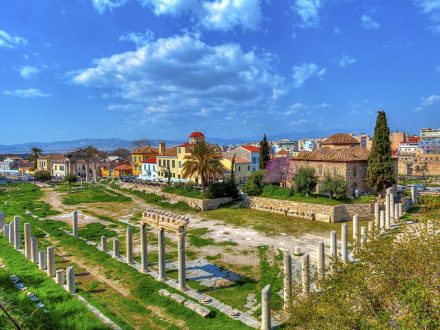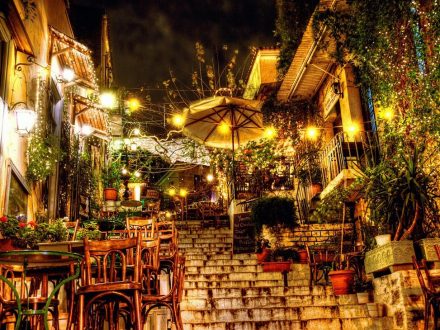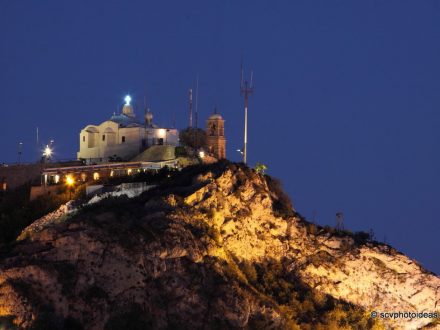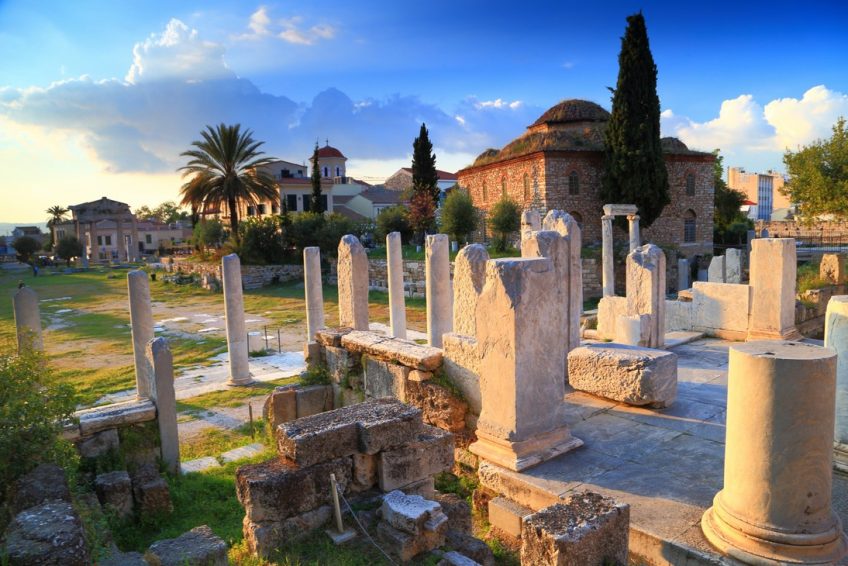
The Roman Agora at Athens is located to the north of the Acropolis and to the east of the Ancient Agora.It was built between 19 and 11 B.C. with a donation of Julius Caesar and Augustus. During the reign of Hadrian the court was paved with slabs. After the invasion of the Herulae in A.D. 267 the city of Athens was restricted to the area within the Late Roman fortification wall, and the administrative and commercial centre of the city was transferred from the Ancient Agora to the Roman Agora and the Library of Hadrian. During the Byzantine period and the Turkish occupation the area was covered with houses, workshops and churches along with the Fethiye Mosque. After the necessary purchase and demolition of the private houses and other buildings covering the area, a series of excavations were carried out by the Greek Archaeological Society (in 1837-45, 1890-91, 1920, 1930-31), by the Italians (in 1940-42), by An. Orlandos and P. Lazarides (in 1963-64) and by the 1st Ephorate of Antiquities (in 1955, 1965-66, 1968, 1984-85, 1989, 1991).
Πηγή: http://odysseus.culture.gr
The original Agora was encroached upon and obstructed by a series of Roman buildings, beginning with the imperial family’s gift to the Athenians of a large odeion (concert hall). The Odeon of Agrippa was built by him in around 15 BC, and measured 51.4 by 43.2 metres, rose several stories in height] and – being sited just north of the Middle Stoa – obstructed the old agora. In return for the odeion, the Athenians built a statue to Agrippa at the site of the previous agora; they based it on a plinth recycled from an earlier statue by covering the old inscription with a new one.
North of the odeion was a new temple to Ares, which completed the repurposing of the old agora.The functions of the old agora were transferred to the Roman Agora, which was built around 100 metres east of the original agora. The Roman Agora has not today been fully excavated, but is known to have been a peristyle open space. To its south was a fountain. To its east, behind a marble colonnade, were shops and an Ionic propylaeum (entrance). To its west was a Doric propylaeum.


